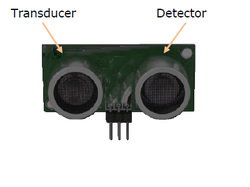Sensors and Actuators
Sensory Systems
In order to perform the designated function robots interact with its surroundings to collect information around it for processing .
Hence, robots are equipped with a sensory system for acquiring inputs from the environment for processing.
Lets have a general view on what type of sensory systems are used in robotics.
Transducer
Device which converts one form of energy into another and vice versa
Electrical lamp electrical energy into light energy
Speaker electrical energy into sound energy
Sensors
Detect or senses the information directly to predict it in the same or other form of energy/information.
Input signal is called Information which can be in the form of a Physical phenomenon or electrical signal.
The sensor first senses or detects the signal and than converts it into a suitable form for the acceptance of the later stage
Sensors convert real-world phenomena like :-
“See”
“Hear”
“Smell”
“Taste”
“Touch”
“Motion”
“tilt”
etc.........
into measurable currents and voltages..
A Sensor is a device which measures a physical quantity and converts it into a signal which can be read by an observer or by an instrument
Rangefinders
Rangefinder sensors are usually devices that emit either light or sound energy to measure the distance from the device to the target.
The most common method is based on measurement of the time required by the emitted beam to reflect back from the obstacle.
Distances measured by rangefinders are retrieved in the form of analog voltage, current or digital signal.
Rangefinders have a minimum and maximum range within which the sensor can measure accurately.
Hence, when selecting the type of rangefinders for particular application, one should take the output signal representation and range factors into considerations.
Ultrasonic Rangefinder
Ultrasonic rangefinder employs the use of ultrasound or sound waves above the normal audible range. They measure the distance by evaluating the echo of the emitted wave produced.
If we want to listen to ultrasound, we need an instrument capable of translating high frequencies into a range we can hear (normally 200-5000 hertz is a comfortable listening range). That is the function of an ultrasound detector. If we want to listen ONLY to ultrasound we need a detector with certain filters to eliminate audible or “parasite” noises.
Ultrasonic detectors use sensors with piezo-electric quartzcrystals which are excited by the energy of certain ultrasonic vibrations. These vibrations are sensed by the detector and translated from their high frequency state to a low frequency state. The sound quality is maintained during this translation so the ultrasound is clearly heard in a headphone.
Sensors are designed to receive both airborne and structureborne

